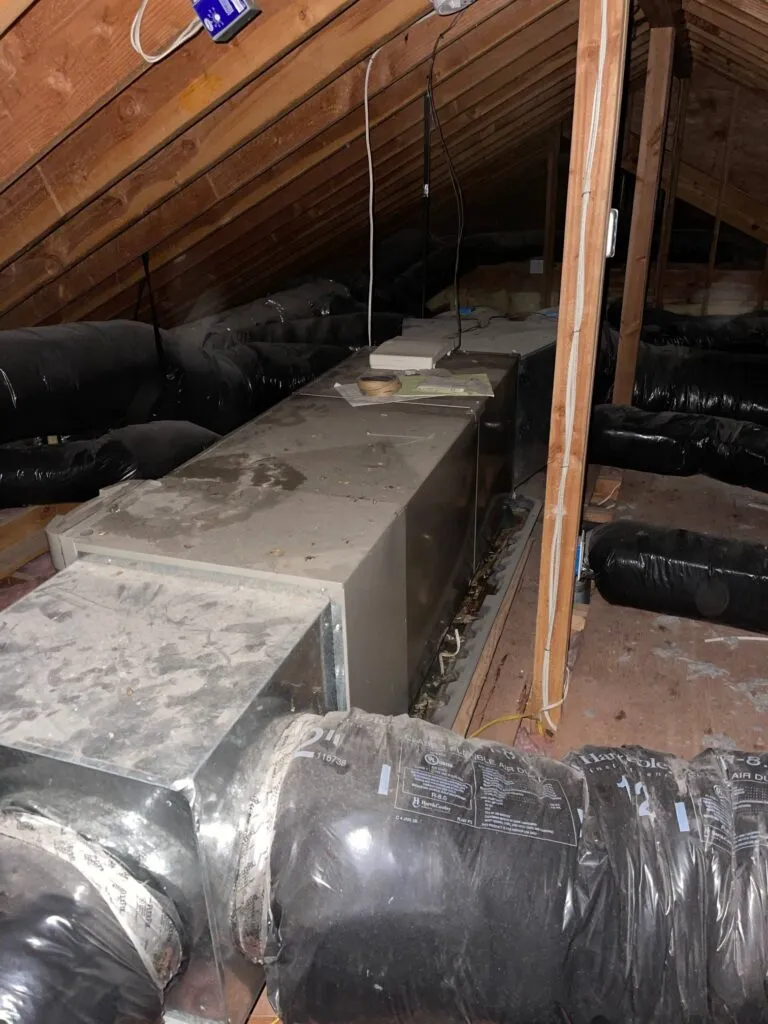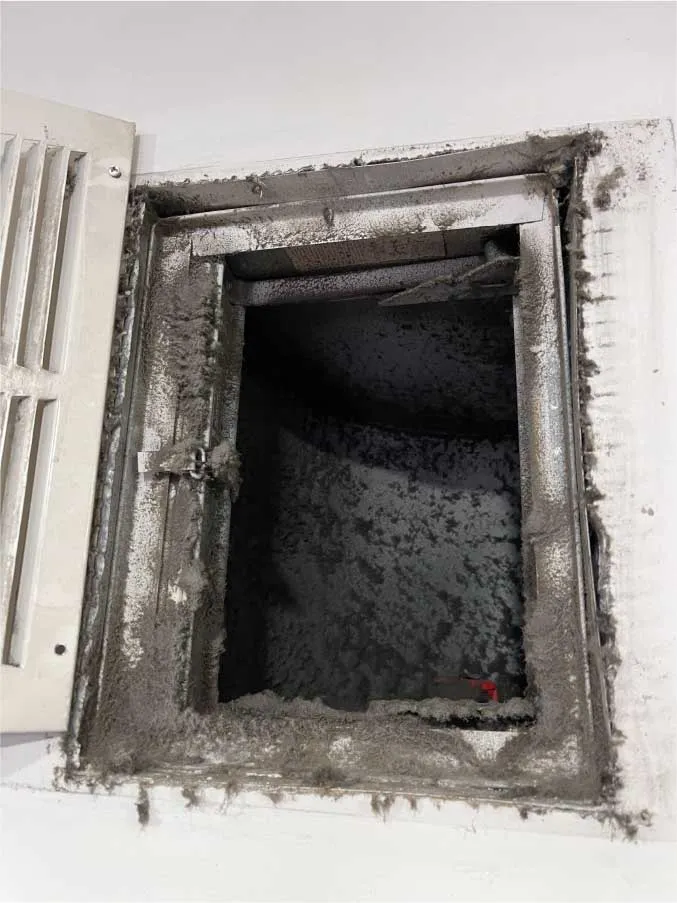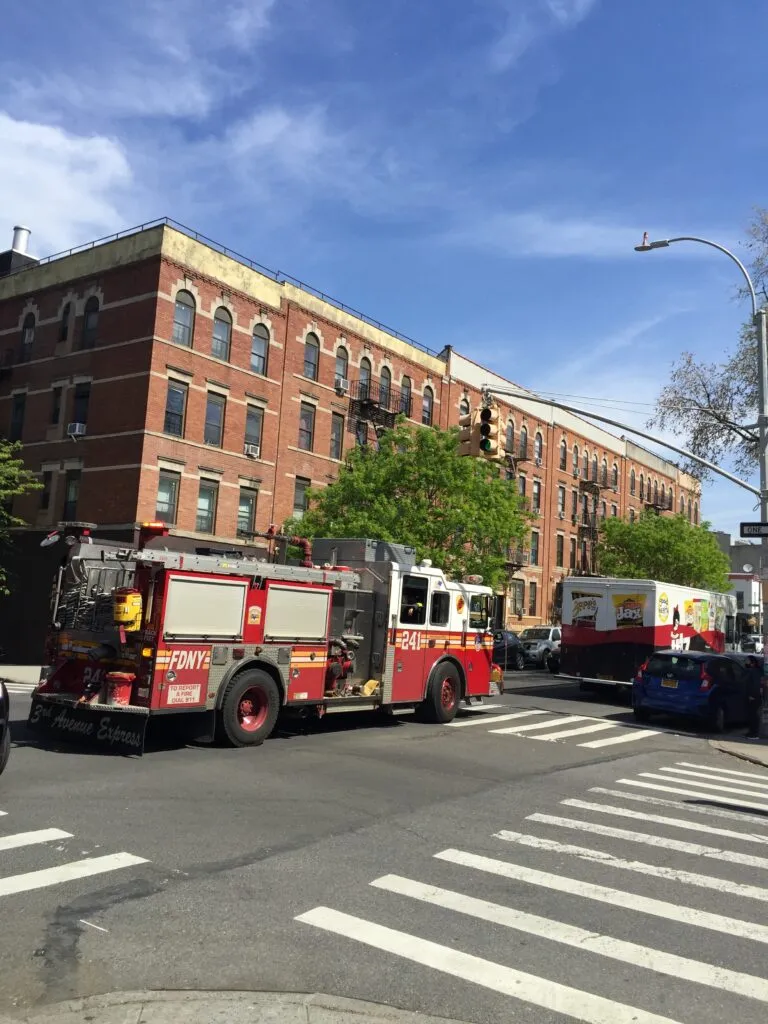Although moisture in air ducts may first seem innocuous, if neglected, it could result in
major issues, including the growth of mold or mildew. Moisture in your ductwork may also be a sign of more serious issues that require attention.
Why Is There Moisture in Air Ducts?
- Leaks in the Home
- Condensation on Cooling Coils
- Unused and Low-Temperature Air Ducts
- Inside Air
- Flooding
How Moistness Builds Up in Ducts

In the absence of warm air passing through ducts, they will cool to levels similar to those of an unconditioned area. Insulation cannot maintain steady or increase duct temperatures on its own.
The rate of heat transfer through the duct wall will be slowed by insulation, but unless this heat is replaced, the duct’s temperature will drop. The moisture-rich air within the house will start to lose moisture when the temperature drops low enough, forming condensation. Condensation will inevitably continue to form and water will start to build up inside the duct without heat being supplied. Frost and ice will form in the duct if the temperature is low enough. The problem becomes apparent once the unconditioned space warms up and the ice melts.
Moisture Effects on Air Ducts
Your home’s whole airflow is supported by air ducts, which also cleanse and circulate the inside air. If your air ducts aren’t sustained, mold growth and mildew growth will start to appear there because of the condensation’s long-term exposure.
- The Appearance of Mold Growth
- Fungal Growth
- Water Damage
- Inefficient Insulation
How to Stop Water from Entering Air Ducts
- Remove The Root Causes
- Install Insulation
- Repair Any Water Damage or Leaks as Soon as Possible
- Make Use of a Dehumidifier
- Minimize Condensation Overflow
- Appropriate Size of HVAC System
- Unused Air Conditioning Ducts Should Be Sealed Off
- Take off the return grill or register, and seal the duct openings closed.
- Plastic sheeting can be taped over larger gaps to close them up.
- Attention should be paid to ensure that complete seals are established, especially in places with high humidity levels, including bathrooms and kitchens.
- Depending on the condition, exterior seals on grills and registers may be sufficient.
- In addition to serving as an air and water barrier, tape and plastic sheeting are also used to keep out moisture.
Impact of Humidity on HVAC System
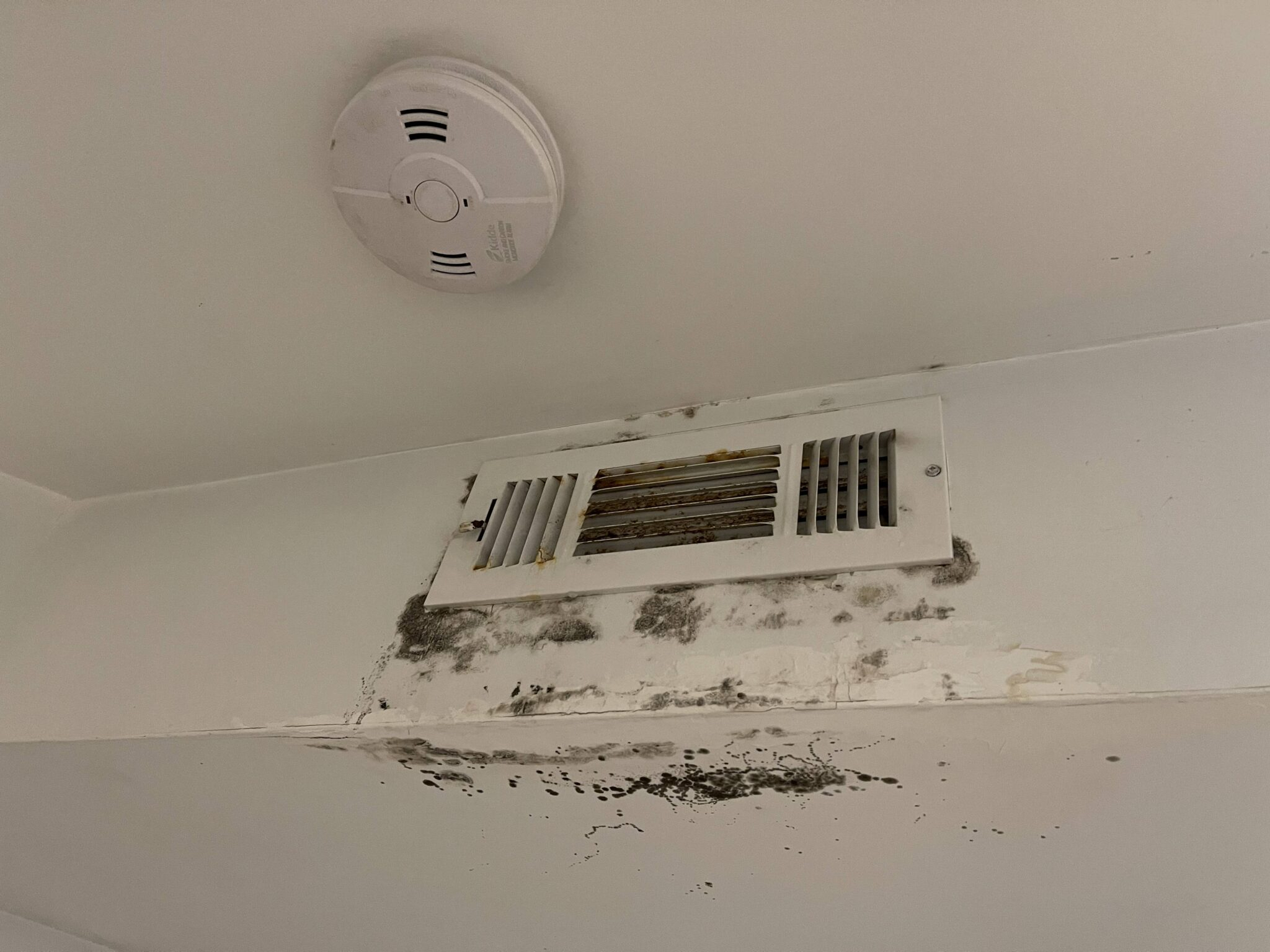
Your HVAC system is put under extra stress during hot weather. However, you may be unaware of the impact humidity can have on your ductwork, heating, and cooling systems. It’s not a good idea to turn off your HVAC while it’s hot or cold outside.
Air conditioners can suffer from severe humidity and extra moisture. Overly high indoor humidity eventually has a significant effect. Due to the additional water vapor that air conditioning systems must eliminate, this may cause them to work harder. Naturally, this can have an impact on the equipment’s effectiveness. For instance, it doesn’t provide enough cooling capacity.
Improper Ventilation Adds to Humidity
If your home has a sealed combustion furnace or a power-vented water heater, your HVAC system may be to blame for the wetness. These appliances vent less air into the chimney, and over time, they produce condensation that encourages the growth of excess humidity and may result in mold issues. Condensation forms on the intake pipe during the winter or in other colder climes, when it then drops to the floor.
The home’s tighter construction results in moisture from the combustion furnace getting trapped, which raises the indoor humidity. All through the year, its effects will be felt. A mechanical ventilation provides a more dependable technique to control interior humidity as a solution to this problem.
An Excess of Moisture in The Air
When you switch on the air conditioning but the air does not feel chilly, there is probably too much moisture in the air in your house. You might notice fog on the windows, a damp or musty smell in your home, and little to no change in the temperature.
A professional from an air duct cleaning company can locate the source of the moisture, which together with a musty smell points to a potential mold issue in your home. Usually, the excessive humidity and “sweating” lead to a mold issue, which is frequently concealed in a cabinet, your HVAC ducts, your attic, or under furniture.
If you had a humidifier installed before to combat dry air, keeping it on throughout spring and summer may be excessive. Around 25% relative humidity would be the optimal minimum. On the other hand, the humidifier you put in to control the dryness over the winter may be leaking.
Remember that the humidifier and air conditioner might not be entirely to blame. In the summer, a leaky house provides a direct conduit for water vapor to enter.
Although the typical offenders are the windows, doors, crawl spaces, and attic, duct leaks or the house envelope may also be allowing moisture inside. Additionally, unproportioned cooling equipment that is too large for your home may make the issue worse.
This is why it is essential to get your HVAC duct cleaning or complete HVAC cleaning of the system so that moisture, mold, and other contaminants can be detected and removed in time.
Plan of Action
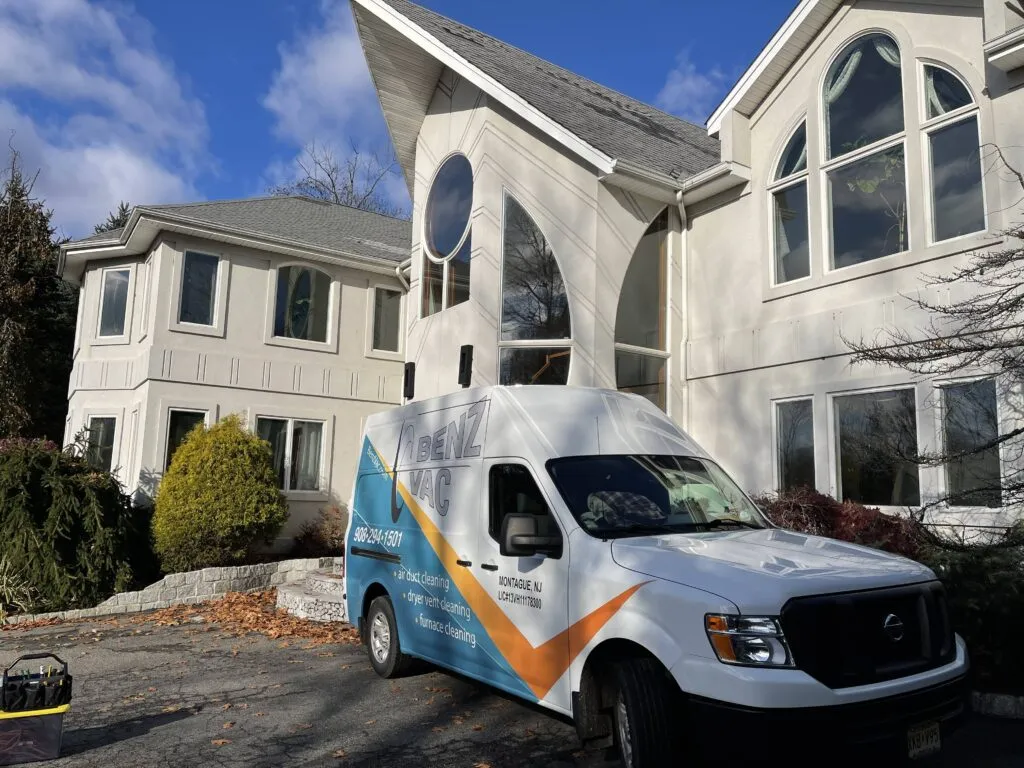
To keep your air ducts clean and dry, there are both immediate and long-term options available.
Here are some actions you can take to remove water from your duct and prevent it from returning.
- Use a plastic tarp and tape to patch any gaps you find in your air ducts. This is a fantastic short-term fix for keeping your HVAC system closed.
- Disconnect the humidifiers. Operating humidifiers keeps your ducts moist and provides moisture to the air. Just run them at night.
- Schedule an inspection of your air ducts by contacting any professional air duct cleaning company, which can guide you properly regarding air duct cleaning for the removal of moisture in your ac ducts.
- Install a dehumidifier in your attic or any other room that has a high humidity level.
To ensure that outside water always remains outside and doesn’t affect indoor air, investing in new insulation is the best course of action for long-term care. Inspect the entire home for leaks and cracks in the other vent systems. Your air duct system may have water damage from a fractured clothes dryer tube, a cracked water pipe, or a cracked chimney. Invest in a hygrometer to track the moisture levels in each room and identify trouble spots.
The best way to ensure that water doesn’t get into your ducts, though, is to have a team of qualified experts examine them regularly.
Final Thoughts
Sometimes we don’t realize that minor issues in our home or air can cause severe issues in our HVAC system. Often, we tend to neglect moisture forming inside our ac ducts. It’s better to realize the significance of frequently checking your air conditioning system for moisture, mold growth, mildew growth, or animal waste as these contaminants not only harm the functionality of your air conditioning system but also affect the health of your family members.
It is recommended that you get your HVAC system inspected by professionals from an air duct cleaning company as they have adequate knowledge, training, and tools to detect the problems in the system and take the measures to eliminate the problematic issues.
Take a look at our locations in New Jersey below and give us a call to begin work with the best ac vent cleaning company!
To schedule an appointment or if you have any questions, call our office today! You should now have a better idea of who is the best ac vent cleaning company in New Jersey!

